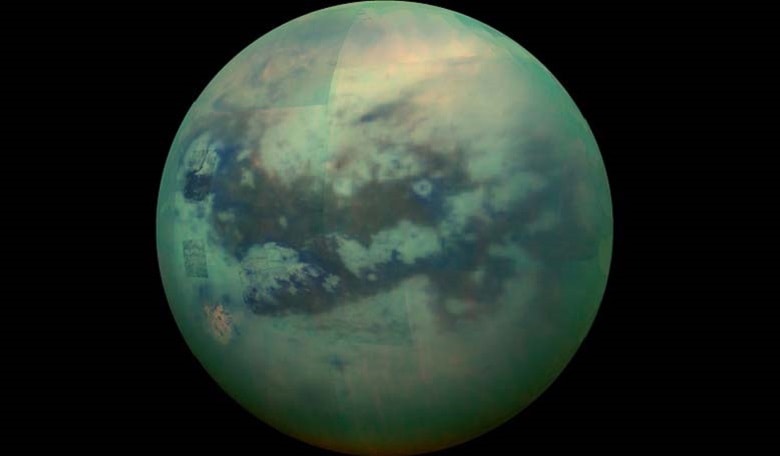Titan’s thick nitrogen and methane atmosphere is reason enough not to linger long on the surface of this unique moon, now scientists working at the Centre for Research in Earth and Space Science in Toronto, Canada, have found another good reason not to stay too long – fog.
Titan is the only moon in the solar system with a substantial atmosphere and as such it is often used in comparison to our own atmosphere. It has a surface atmospheric pressure that is 1.5 times that of Earth’s, but unlike Earth, the lack of oxygen in Titan’s atmosphere allows for the production of complex organic molecules, such as poly aromatic hydrocarbons (PAHs) – rings of carbon and hydrogen atoms.
In addition, complex hydrocarbon aerosols, commonly known as tholins, are thought to result in the dense orange haze that is characteristic of Titan’s atmosphere and is the reason that Titan’s surface is obscured from view at visible wavelengths. Titan is also thought to undergo Methane cycling, the same hydrological-cycling processes that we see on Earth, but with methane instead. This is corroborated by past studies that have also revealed evidence for methane ‘rain’ darkening the surface of Titan.
Most of the data gathered on Titan’s fascinating atmospheric features have been possible due to the Huygens probe that descended through Titan’s atmosphere for 2.5 hours before landing on it’s surface over a decade ago. Huygens is equipped with a number of imagers that observe in different directions and have differing resolutions and fields of view. These are the High Resolution Imager (HRI), the Medium Resolution Imager (MRI) and the Side Looking Imager (SLI). It is with the SLI instrument that Christina Smith, a postdoctoral researcher at York University, Toronto, and lead author of a paper recently accepted with Icarus, The Solar System Journal, along with colleagues, who used data from this imager to search for features such as clouds and mirages, in the lower atmosphere of Titan as viewed from the surface.
“We initially set out to see whether we could see clouds from the surface of Titan - clouds are seen in movies from the surface of mars, taken by the MSL rover curiosity - and instead we came across these features which don't appear to be consistent with clouds,” explains Smith.
The features in question were extracted from images that were retrieved from the Planetary Science Archive. From the 82 images that were analysed, 6 of the images were found to have an extended horizontal feature and after further calibration the team have suggested that the presence of a fog bank rising and falling explains the change in feature intensity with respect to the background. “Finding a possible fog bank from the surface of Titan is really exciting - fog has been seen from orbit but hadn't been detected from the surface before,” said Smith.
“This is a great example of why it's so important that the Nasa Planetary data is accessible to the public. It allows other scientists beyond those on the original mission to have the opportunity to work with the data and utilise new and different analysis techniques (sometimes a decade later) to try and extract any and all useful information from it,” explained Brittney Cooper, an undergraduate research assistant, who is second author on the research paper and also based at York University, Toronto.











